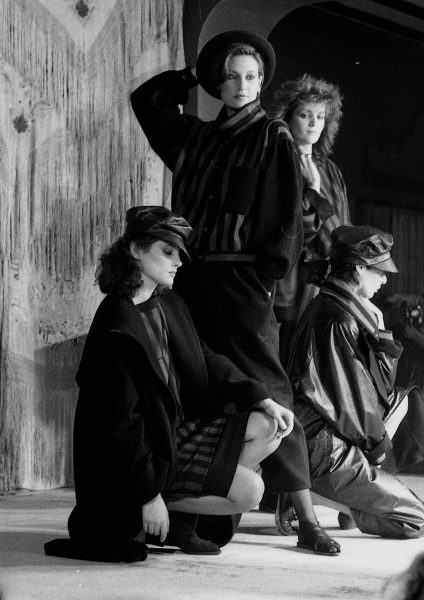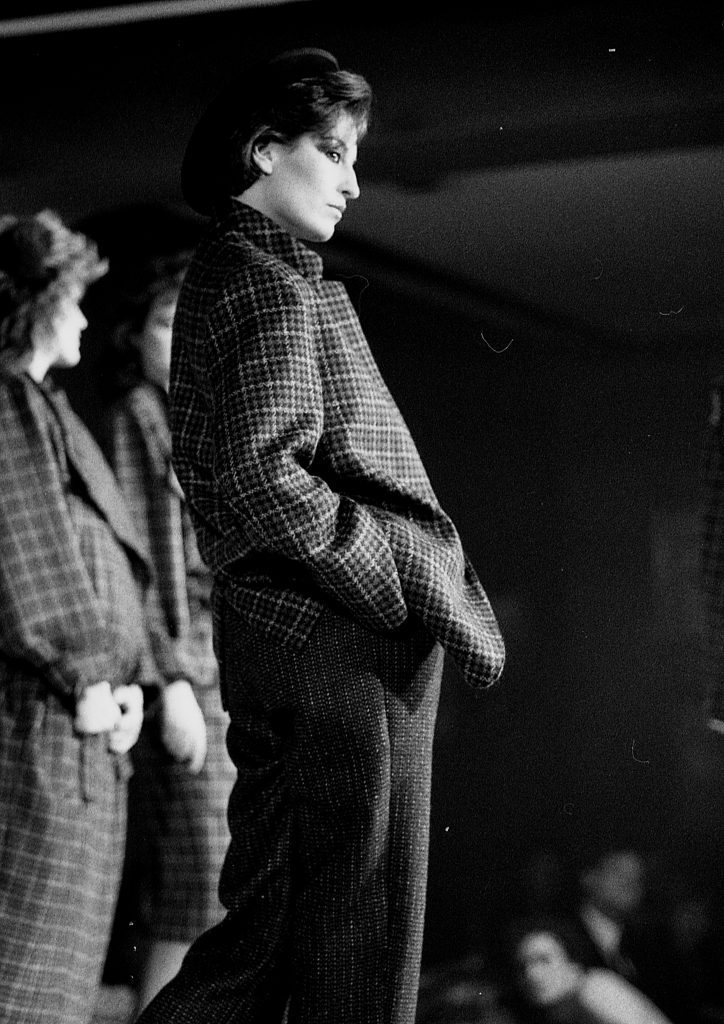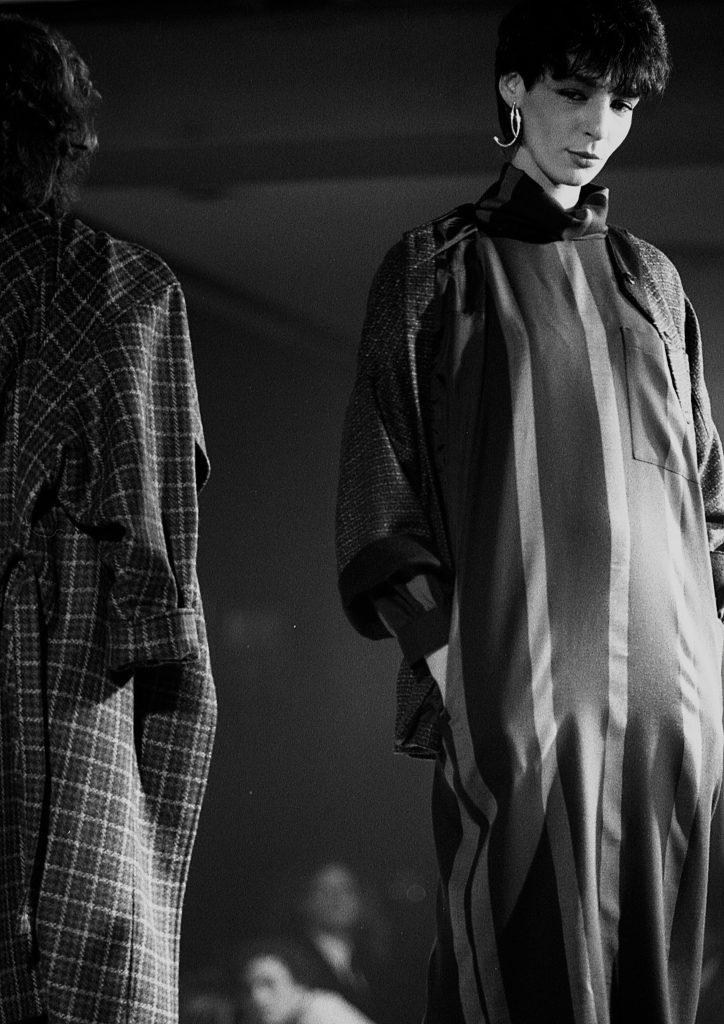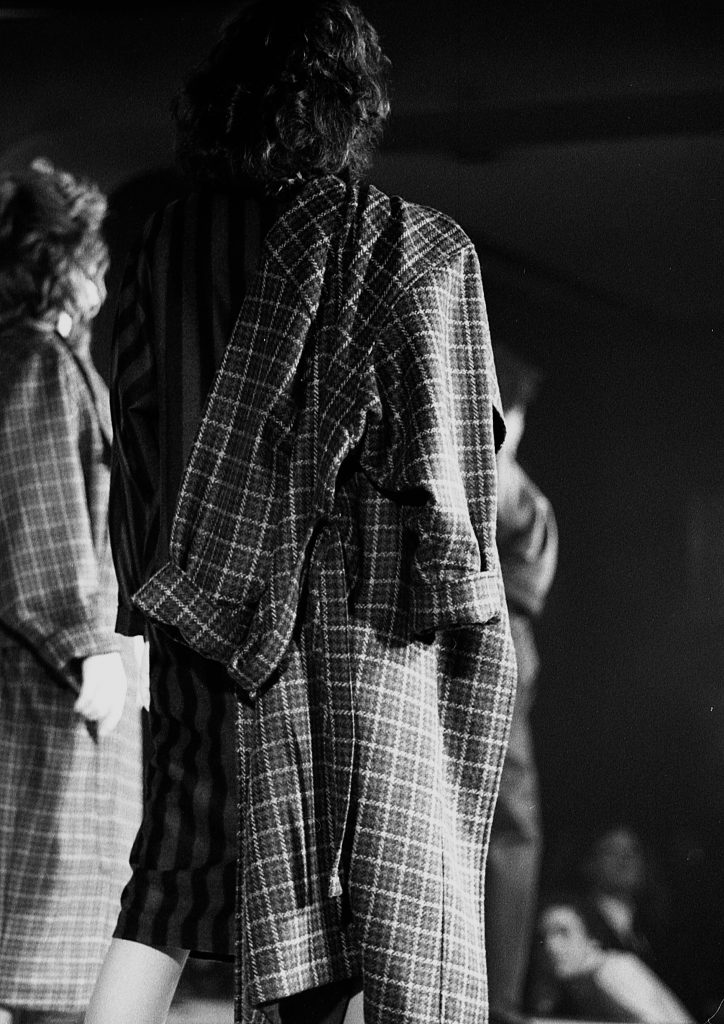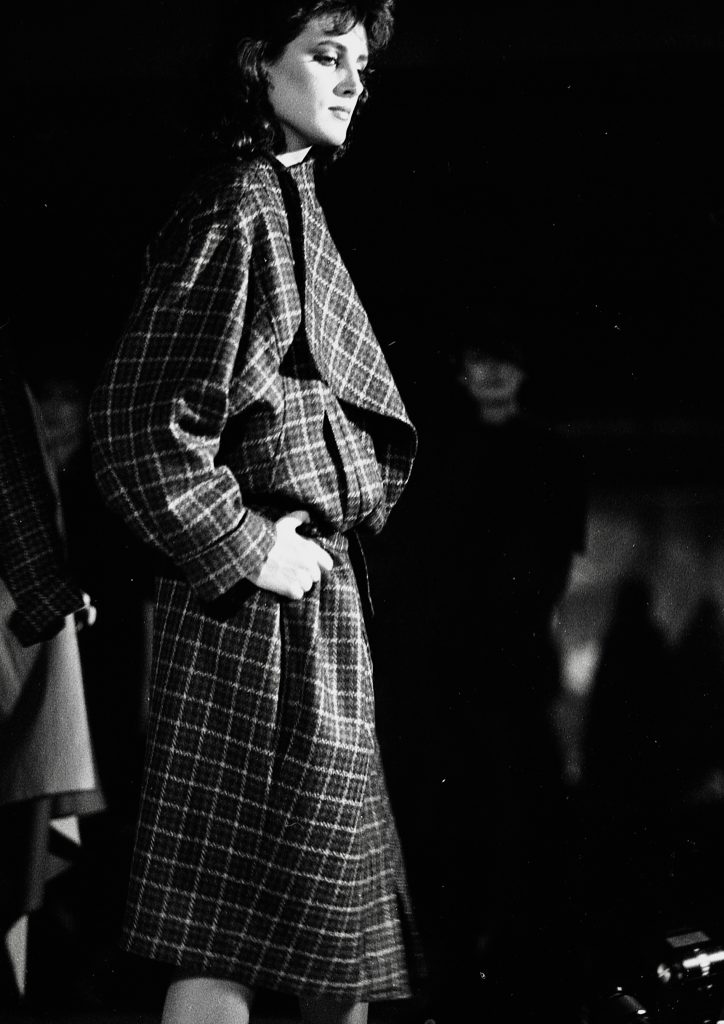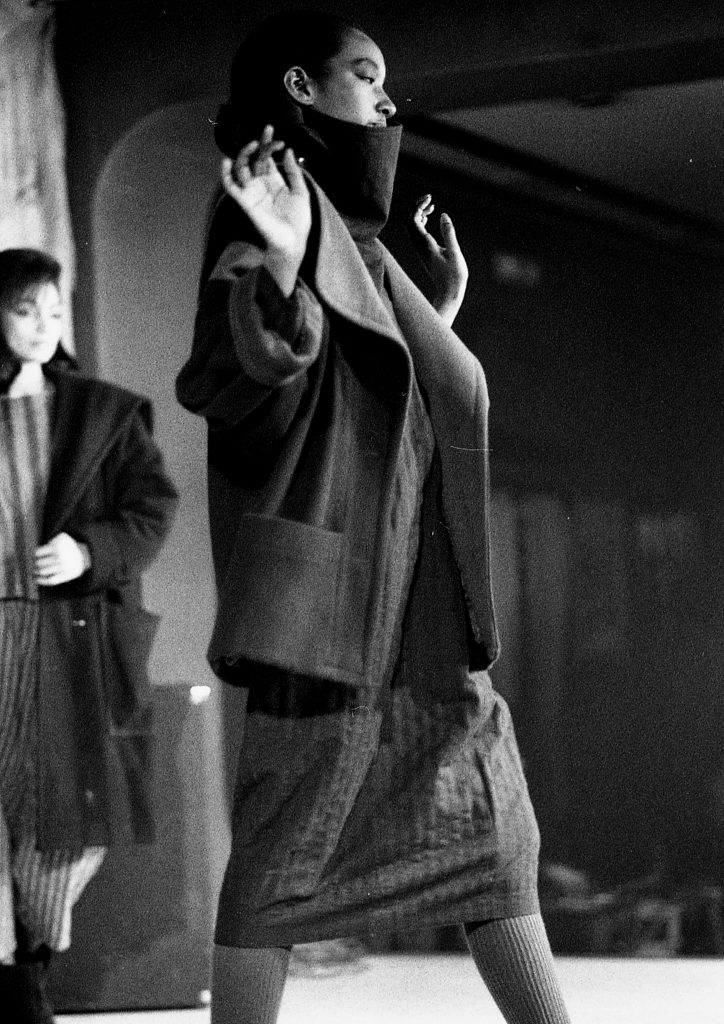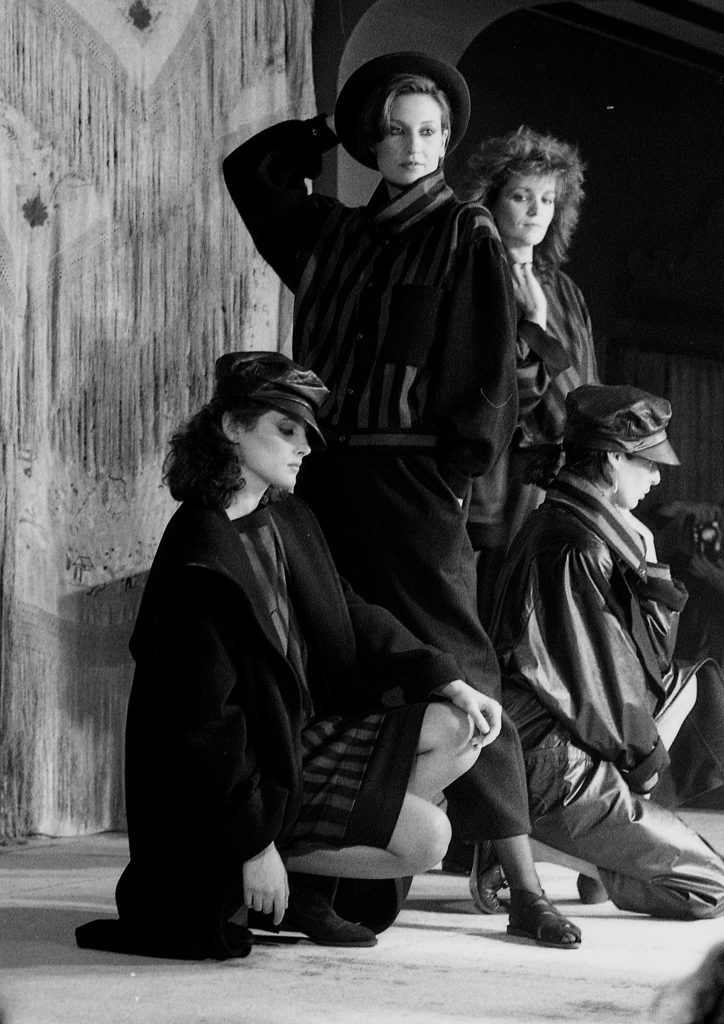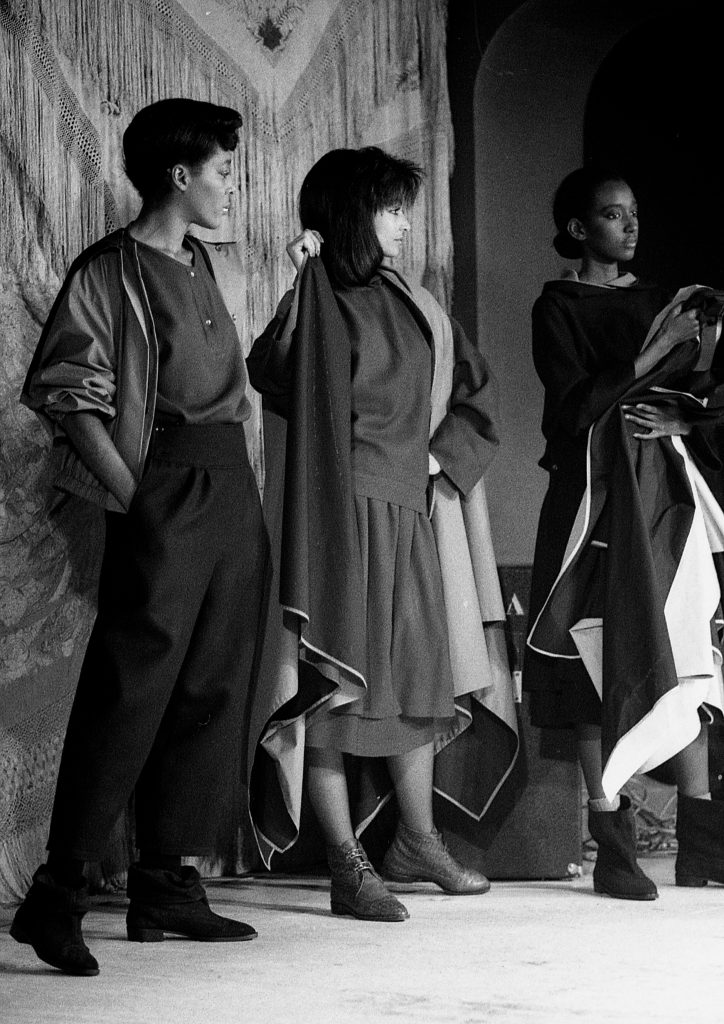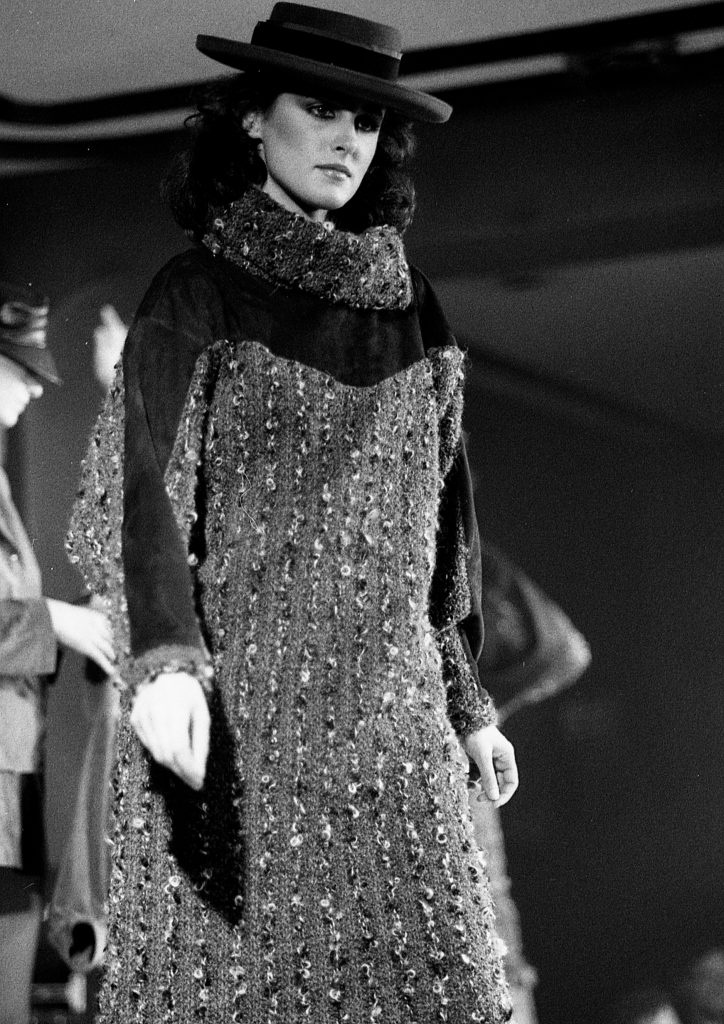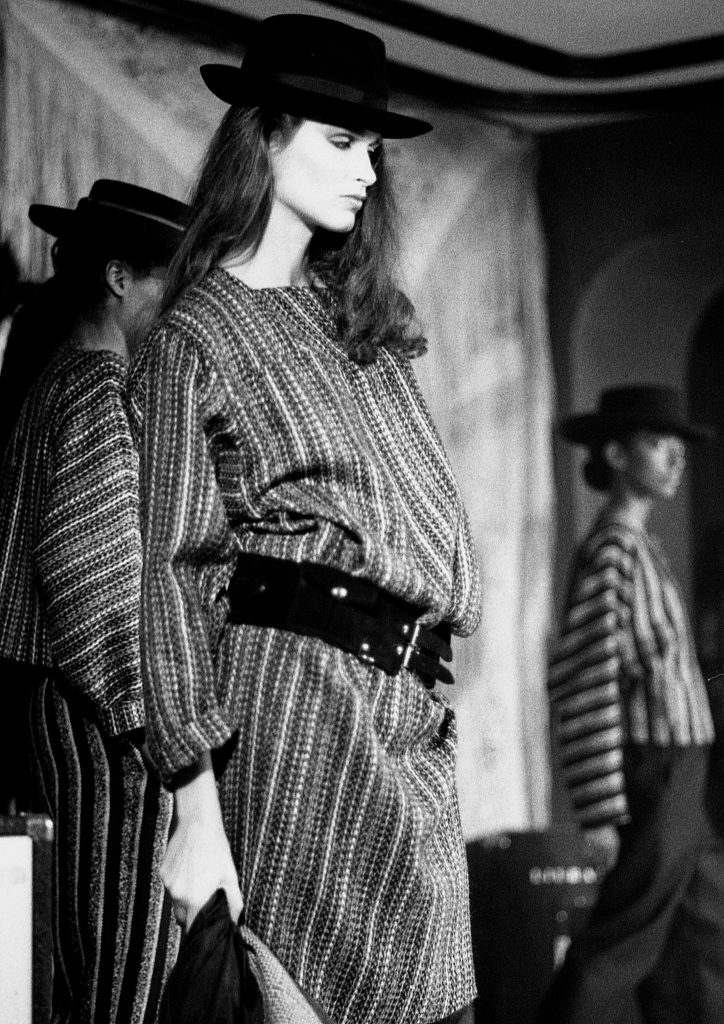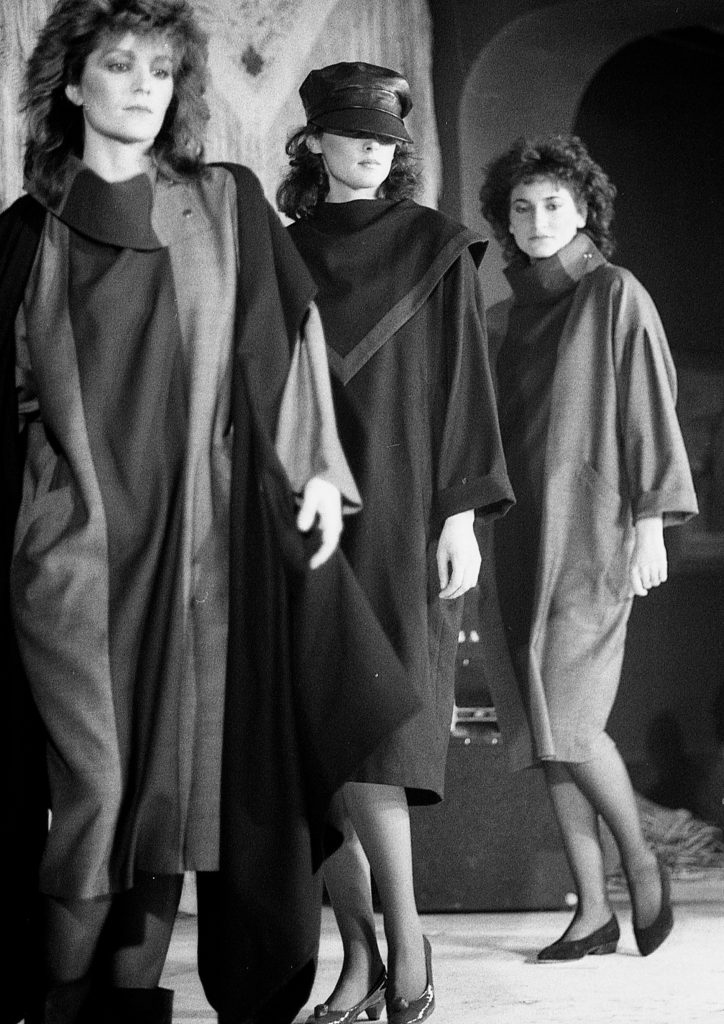ROBERTO VERINO’S FIRST FASHION SHOW
English / Español
1983, Madrid. In the mythical flamenco venue, Café de Chinitas, a young Galician designer, Roberto Verino, presents his first women’s wear collection breaking rancid fashion codes in a post-modern style statement.
Deconstructing garments and restructuring set ideas are the concepts behind the postmodernism current that represented the creative path followed by many fashion designers at the time. Roberto Verino’s first fashion show, at the popular flamenco venue Café de Chinitas, was hailed as a new fashion concept, a novel sartorial experience for a modern woman. At the time though, not everyone was happy with this innovative and disruptive approach to fashion that changed not only the way women dressed but also the way fashion was presented.
Sac dresses, oversize capes, coats and jackets, an ambiguous approach to the suit, stripes and plaids together in one outfit, textured fabrics, a neutral palette of greys and browns, and flat shoes, which actually shocked some attendees, together with the fact that Verino did not include a bride as his last runway look, broke unwritten fashion rules that branded the Galician designer as an innovative.
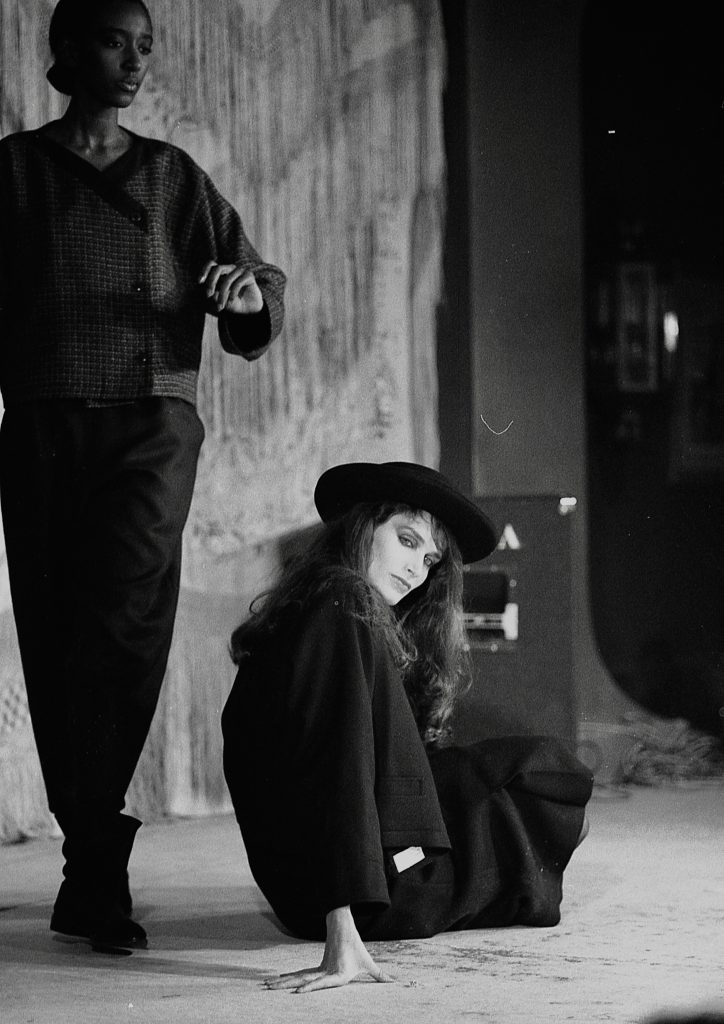
Roberto Verino, Madrid 1983. 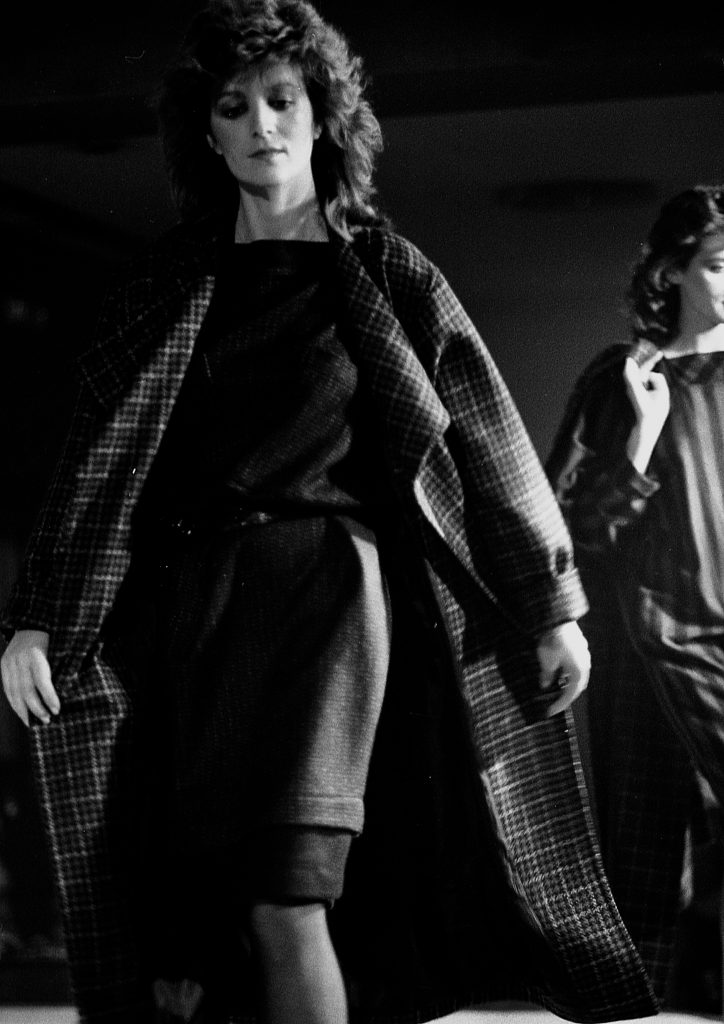
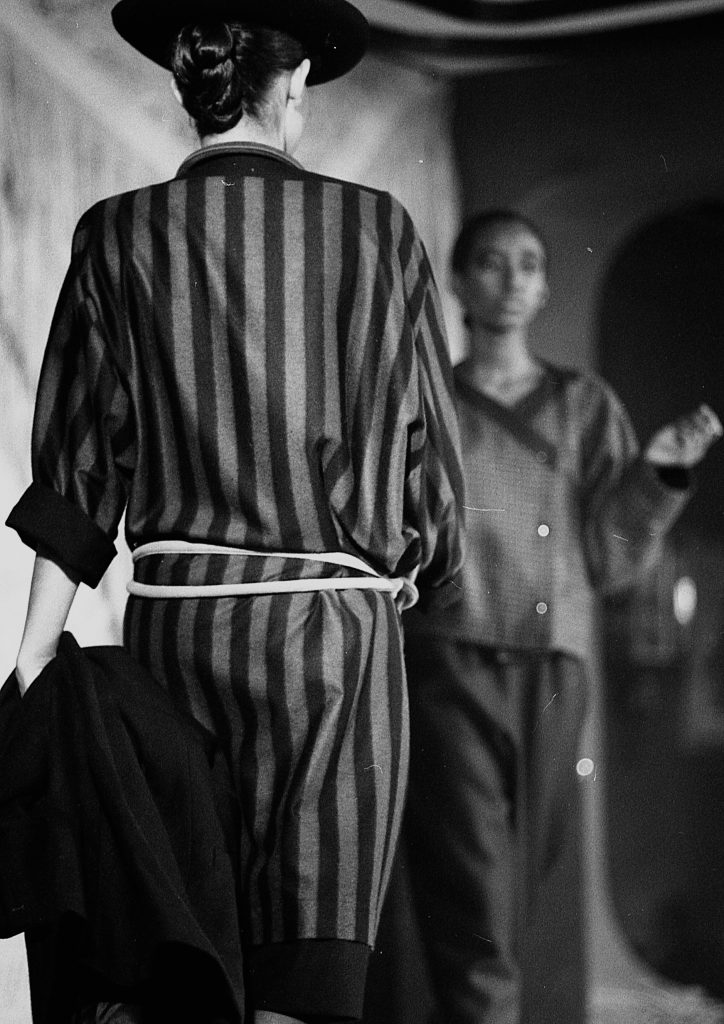
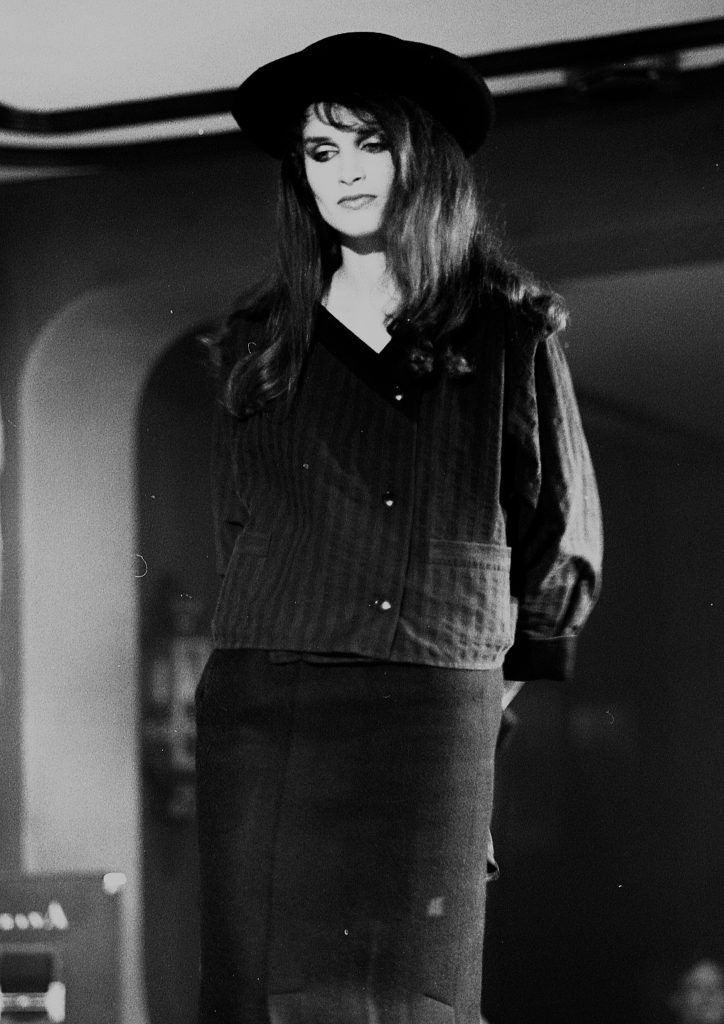
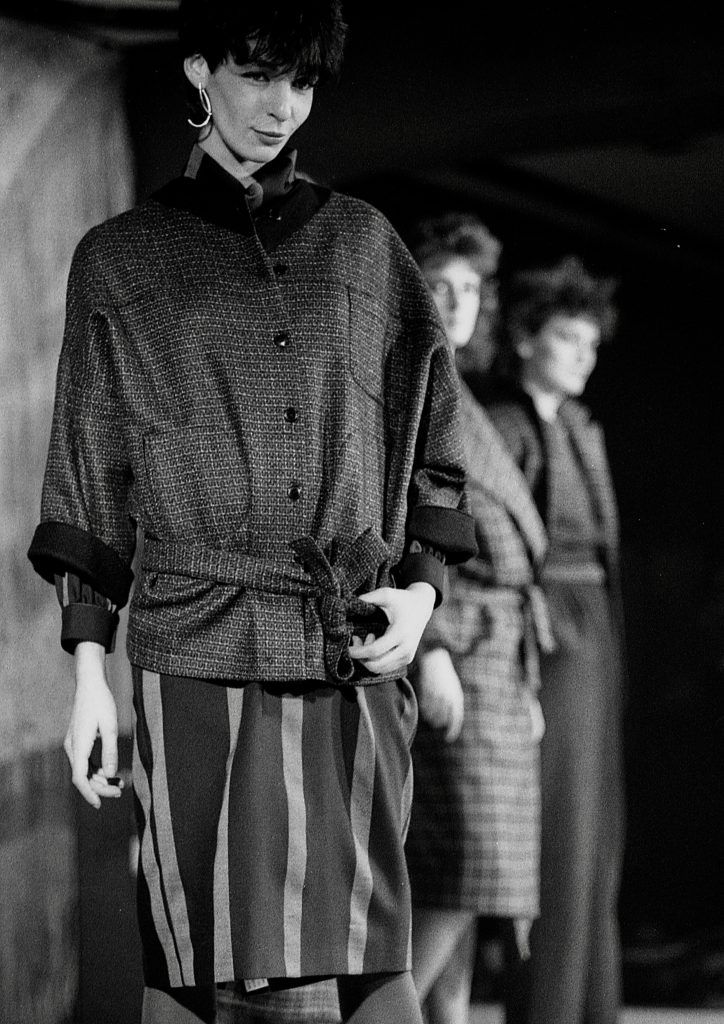
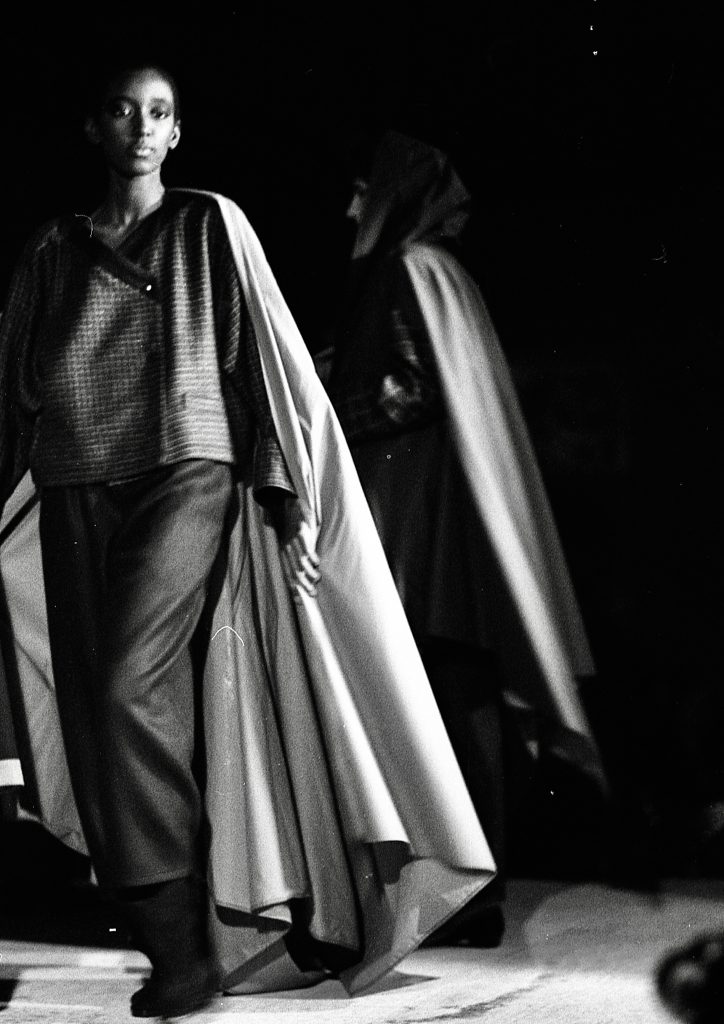
The conservatives also considered the venue where the fashion show was held not in “good taste” as the mythical flamenco setting, Café de Chinitas was deemed lacking in elegance. The fashion show format where models walked and posed with an attitude, with personality, as opposed to creating figurines, together with an ambiguous styling, underlined Verino’s postmodernist approach to fashion.
There was no fashion press at the time. Fashion was deemed too superfluous for serious daily newspapers or television, only relative to women’s magazine. Fashion was then, not only in Spain, considered a lesser decorative art apt for “colorful” men and women. Slowly this began to change in the ’80s as the fashion design sector demonstrated a sociological commitment towards the development of modernity in a new, democratic Spain. Local media began to take fashion more seriously with dailies El Pais and Diario 16 leading the way regarding how fashion in Spain was integrated
So yes, this was a key fashion show, not only for Verino but also for the Spanish Fashion System in general. Roberto Verino, together with his peers, Jesús del Pozo in Madrid, Toni Miró in Barcelona, Francis Montesinos in Valencia and Adolfo Dominguez, another leading Galician designer, set the pace for a new generation of Spanish fashion designers about to appear and dress up Spain from a
Roberto Verino is today a leading figure in Spanish Fashion. A founding member of the Asociación de Creadores de Moda de España, ACME, his eponymous fashion brand is a household name in Spain. Verino joined Pasarela Cibeles in 1986 and is one of the few Spanish fashion designers to have presented his collections consistently throughout 32 years. Innovation is a constant in Verino’s mindset showcased by staging the seenowbuynow formula in his latest fashion shows in MBFWMadrid. The legacy fashion brand is set to maintain global expansion through its retail network of signature boutiques and leads successful e-commerce trends with an efficient and tendered online boutique were the fashion and accessories collection, for men and women, are available for all to enjoy the designer’s signature styles.
To be continued…
